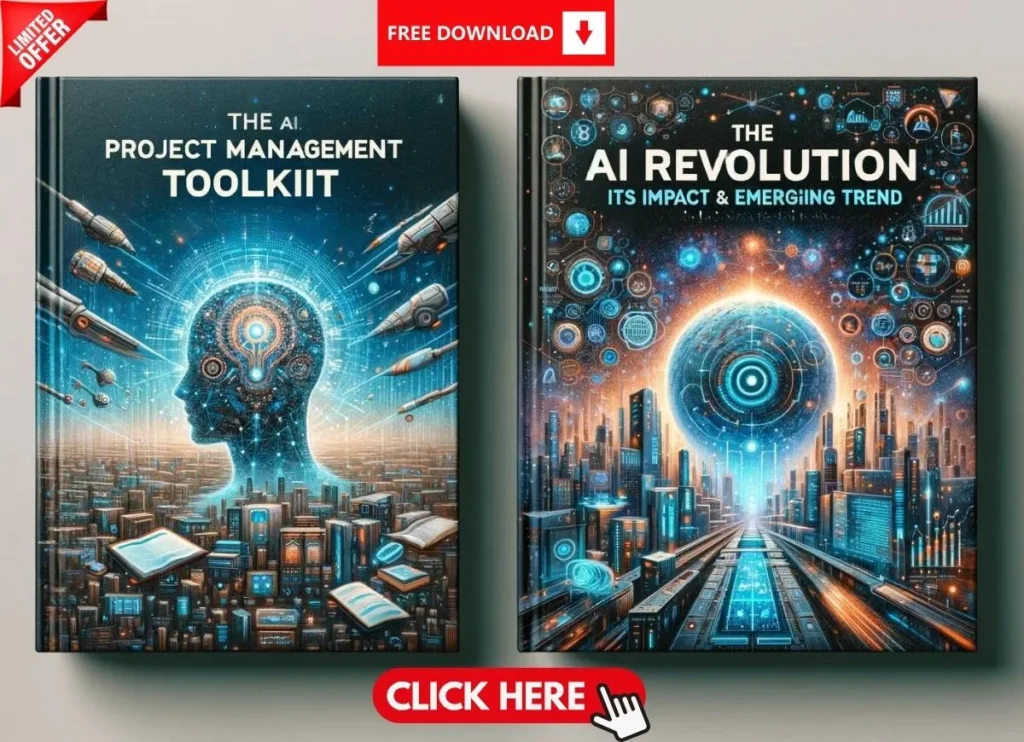Projects are the lifeblood of any organization, driving growth, innovation, and success. However, developing and executing high-risk projects demands a strategic mindset, a willingness to take risks, and a firm commitment to achieving remarkable results. One of the most valuable tools in a project manager’s arsenal for navigating this challenging terrain is the risk to reward ratio.
This blog post is tailored for project managers and aspiring professionals seeking to understand the risk to reward ratio and leverage it to develop and execute projects that can potentially deliver 10x returns. We will explore the concept, learn how to assess risks and rewards, discover strategies to reduce risk while maximizing rewards, and discuss best practices for executing high-risk projects successfully.
What is Risk to Reward Ratio?
The risk to reward ratio is a critical metric used by project managers to evaluate the potential risks versus the rewards of a project. It is calculated by dividing the potential reward by the potential risk:
For instance, if a project has a potential reward of $100,000 and a potential risk of $10,000, the risk to reward ratio would be 10:1. This ratio provides insight into whether the potential gains of a project justify the risks involved, aiding in informed decision-making.
Assessing the Potential Risks and Rewards
Assessing potential risks and rewards is a crucial step in project development. Project managers must identify and evaluate potential risks to decide whether a project is viable. Calculating the risk to reward ratio helps in understanding if the potential benefits outweigh the risks.
Steps to Assess Risks and Rewards:
Conduct a Comprehensive Analysis: Start by thoroughly analyzing the project’s scope, objectives, timeline, resources, and stakeholders. This analysis should provide a detailed understanding of what the project entails and the resources needed for successful execution.
Use a Risk Assessment Matrix: A risk assessment matrix is an effective tool to help identify, analyze, and prioritize potential risks. This matrix plots the likelihood of a risk occurring against its potential impact, allowing project managers to focus on the most critical risks first. Common risks include budget overruns, scope creep, timeline delays, resource shortages, and stakeholder disagreements.
Evaluate Potential Rewards: Assess the project’s expected outcomes to estimate its potential rewards. This may include increased revenue, market expansion, competitive advantage, cost savings, or enhanced brand reputation. The clearer you are about the potential rewards, the more accurately you can assess the risk to reward ratio.
Calculate the Risk to Reward Ratio: After identifying the potential risks and rewards, calculate the risk to reward ratio to determine if the project is worth pursuing. A higher ratio (e.g., 10:1) suggests that the potential rewards significantly outweigh the risks, making the project more attractive.
Strategies for Reducing Risk and Increasing Rewards
Effectively managing high-risk projects involves minimizing potential risks and maximizing potential rewards. Here are some practical strategies to help you achieve that:
- Pilot Testing:
One effective risk mitigation strategy is to conduct a pilot test before fully launching the project. A pilot allows you to test the feasibility and viability of the project on a small scale. It provides valuable insights into potential issues and risks that might arise during full-scale execution. By learning from a pilot, you can make necessary adjustments, reduce uncertainties, and minimize financial and operational risks. - Develop Contingency Plans:
Unforeseen challenges are almost inevitable in high-risk projects. Contingency plans are essential for addressing potential risks that may occur during project execution. Your contingency plans should include realistic, achievable, and cost-effective solutions to mitigate the impact of identified risks. For example:If there’s a risk of a budget overrun, consider having a buffer fund.
If key resources might become unavailable, have backup personnel or alternative suppliers ready.
Pro Tip: Contingency plans are most effective when they are developed early in the project lifecycle and are regularly updated as the project progresses. - Partner with Other Organizations:
Collaborating with other organizations can significantly enhance your project’s potential rewards. By forming strategic partnerships, you can leverage additional resources, expertise, and networks to reach your project’s objectives more effectively. For instance, partnering with a tech company could provide access to new technologies, while collaborating with a marketing firm could help expand your project’s market reach. - Offer Incentives to Stakeholders:
Incentives can drive motivation and commitment among stakeholders, ultimately increasing the potential rewards of your project. Consider offering performance-based incentives to stakeholders who contribute to the project’s success. This can encourage higher productivity, improved collaboration, and innovative problem-solving approaches. - Regularly Review and Adapt:
A proactive approach is vital in managing high-risk projects. Conduct regular reviews to monitor progress, identify emerging risks, and evaluate the effectiveness of your current strategies. Be flexible and ready to pivot when necessary. Adjusting your strategies in response to changing conditions can help you stay on track toward achieving the desired 10x returns.
Best Practices for Executing High-Risk Projects
Executing high-risk projects successfully requires a strategic mindset, a risk-tolerant attitude, and an unwavering focus on the end goal. Here are some best practices to help you navigate high-risk project execution:
- Establish Clear Communication Channels:
Effective communication is essential for managing high-risk projects. Establish clear communication channels to ensure that everyone involved is well-informed about the project’s status, changes, and emerging risks. Utilize tools such as:
- Project management software for tracking progress and sharing updates.
- Regular meetings to discuss progress, challenges, and solutions.
- Email updates and reports to keep stakeholders informed.
Open and honest communication fosters trust and enables quick response to unforeseen challenges.
- Provide Training and Support:
Equipping your team with the right skills and knowledge is crucial for successful project execution. Provide adequate training to ensure team members can effectively handle their responsibilities and adapt to changes. Support your team by providing the resources they need, offering guidance, and maintaining a collaborative work environment. - Establish a Culture of Accountability:
High-risk projects thrive in a culture of accountability. Encourage team members to take ownership of their tasks and responsibilities. Define clear roles and expectations, and hold regular check-ins to monitor progress. Recognize successes and address any shortcomings constructively. - Regular Progress Reviews and Adjustments:
Conduct regular project reviews to assess progress against objectives. These reviews allow you to identify issues early, evaluate risk mitigation measures, and make necessary adjustments to your strategy. This iterative approach helps you stay aligned with the project’s goals and enhances your ability to deliver 10x returns.
Conclusion: Risk to Reward Ratio
The risk to reward ratio is a valuable metric for project managers to assess the potential risks and rewards of their projects. By thoroughly analyzing projects, calculating the risk to reward ratio, and developing strategies to reduce risks while maximizing rewards, project managers can make informed decisions about whether a project is viable.
Executing high-risk projects requires strategic planning, effective communication, a culture of accountability, and regular reviews to navigate unexpected challenges. By following these best practices and maintaining a flexible approach, project managers can deliver projects that achieve 10x returns.
FAQs
The risk to reward ratio is a comparison of the expected returns of an investment to the potential downside risk. It’s used to evaluate the potential for loss compared to the potential for gain.
The risk/reward ratio is calculated by dividing the amount that you stand to lose if the price moves in an unexpected direction (the risk) by the amount of profit expected if the trade is closed (the reward).
In project management, the risk to reward ratio helps in evaluating the potential risk and rewards of undertaking a particular project. It aids in decision-making and risk management.
Risks could include cost overruns, delays, technical issues, or stakeholder conflicts. Rewards could be revenue growth, improved customer satisfaction, market expansion, or enhanced brand reputation.
By understanding the risk/reward ratio, project managers can make better decisions about whether to proceed with a project, how to allocate resources, and how to mitigate risks.
Risk reduction strategies include thorough planning, risk identification and assessment, contingency planning, and effective communication.
To increase rewards, project managers can focus on maximizing project efficiency, improving quality, enhancing customer satisfaction, and exploring additional revenue opportunities.
Best practices include conducting a thorough risk assessment, using a risk matrix, involving all stakeholders in the assessment, and regularly reviewing and updating the risk/reward analysis.
Yes, tools like risk assessment matrix, risk management software, and project management platforms can aid in assessing the risk/reward ratio.
By comparing the potential rewards against the potential risks, project managers can determine whether a project is worth pursuing and how to prioritize different projects
A risk assessment matrix is a tool used to identify and assess the potential impact of risks on a project. It helps in prioritizing risks based on their likelihood and impact.
You can use a risk assessment matrix by listing all potential risks, scoring their likelihood and impact, and then focusing on the risks with high scores for both likelihood and impact.
Strategies include thorough planning, effective communication, efficient resource allocation, risk mitigation, quality control, and customer satisfaction enhancement.
A pilot test involves implementing a small-scale version of the project to assess its feasibility, identify potential issues, and evaluate its likely success.
When developing a contingency plan, consider potential risks, their impacts, planned responses, responsible persons, and resources required.
Risks can be prioritized based on their potential impact and likelihood of occurrence using a risk assessment matrix.
The evaluation should consider factors like alignment with business goals, feasibility, potential rewards, and stakeholder interests.
A risk assessment matrix should be regularly updated throughout the project lifecycle as new risks may emerge and existing ones may change.
Benefits include improved decision-making, better resource allocation, risk mitigation, and increased chances of project success.
Without a risk assessment, projects may face unexpected challenges, cost overruns, delays, and reduced profitability.
Best practices include thorough planning, effective communication, risk mitigation, regular monitoring, and contingency planning.
Steps include setting clear expectations, regular updates, open feedback channels, and utilizing effective communication tools.
Team members can be supported through training programs, mentorship, access to resources, and a supportive workplace culture.
Strategies include setting clear roles and responsibilities, regular performance reviews, and systems for tracking and reporting progress.
Regular reviews can be conducted through meetings, progress reports, and project management software.
Processes include regular reviews, feedback mechanisms, flexible planning, and contingency plans.
Strategies include efficient resource utilization, quality enhancement, customer satisfaction improvement, and exploring additional revenue opportunities
Organizations can form partnerships, outsource certain tasks, use consultants, and network with industry peers.
Incentives can include financial rewards, recognition, opportunities for growth, and a stake in the project’s success.
The best way is to have contingency plans in place, be flexible and adaptable, communicate effectively, and make quick decisions based on sound analysis.








